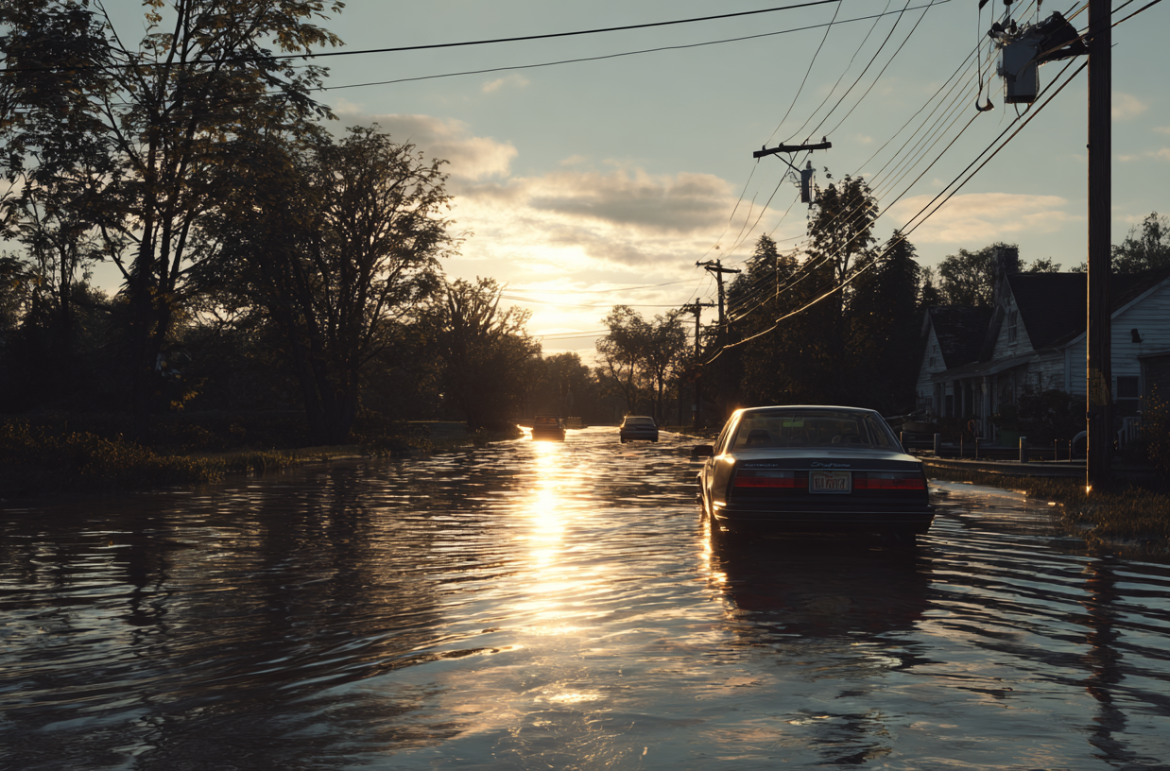Rising Flood Risks Are Changing the Salvage Market

When floodwaters rise, it’s not just homes and streets that get washed out. Thousands of vehicles are caught in the surge, from family sedans left in driveways to fleets parked at dealerships. Once the waters recede, many of those cars end up totaled by insurers and then reappear at salvage auctions. For bidders, flood-damaged cars are a growing reality. In 2025, flood cars are no longer background noise in auctions – they’re setting the tone for entire sales. On AutoBidMaster, that means sharper choices for buyers, where every bid carries both risk and reward. In this edition of Under the Hood, we’ll explore why rising flood risks are changing the salvage market and what you should be aware of when bidding on such vehicles.
Why Flood Cars Keep Appearing
Every major storm season adds another wave of vehicles to the salvage pool. Whether it’s hurricanes in the Southeast, flash floods in the Midwest, or river overflows in the Northeast, water damage leaves insurers with little choice but to declare cars total losses.
Why? Because water wreaks havoc in ways that aren’t always visible. Electrical systems corrode, safety sensors short out, and mold spreads fast. Repairing these issues is rarely cost-effective for insurers, so the cars are offloaded into the salvage market.
This cycle means that after every big flood, auctions fill up with thousands of affected vehicles. And while many will never see the road again, some will, often through the hands of savvy buyers who know what to look for.
The Risks Are Real
For any buyer, flood damage is serious business. The most common issues include:
- Electrical failures: Water and wiring don’t mix, and problems often appear weeks or months later.
- Engine damage: Hydrolock or internal corrosion can leave a car permanently crippled.
- Mold and mildew: Interiors quickly become health hazards if not cleaned properly.
- Resale challenges: Even repaired flood cars may carry stigma on the used market.
That’s why many buyers avoid them altogether. In a traditional auction lane, you might rely on your nose or a flashlight to spot the warning signs. But in digital auctions, the process is different: you lean on reports, photos, and history checks.
Where the Opportunities Are
Here’s the flip side: not all flood cars are disasters. Some may have only cosmetic issues, such as damp carpets or surface rust, but no lasting mechanical problems. Others can be valuable sources of parts, especially in-demand engines, transmissions, or body panels untouched by water.
For rebuilders with the right skills, flood vehicles can be bargains. And for parts dealers, they’re often a gold mine. That’s why flood cars consistently draw attention, even with their risks.
The editorial truth is this: one person’s disaster can become another’s opportunity. Salvage auctions are where that transformation happens.
How AutoBidMaster Fits In
For online buyers, the key is information. At AutoBidMaster, flood-damaged vehicles are clearly labeled, with condition reports and photos to help bidders make informed choices. Vehicle history tools add another layer, revealing whether a car has been through multiple auctions or carries repeated flood titles.
This transparency matters. Without it, digital buyers would be gambling blind. With it, they can weigh the risks against potential rewards.
Then there’s auto-bidding – an advantage unique to digital platforms. If you’re targeting a specific flood-damaged lot, setting an auto-bid ensures you don’t get swept up in the heat of competition. You cap your price, avoid emotional overspending, and keep your strategy disciplined.
The combination of clear data plus smart bidding tools is what makes buying flood cars in 2025 safer than ever before.
Floods as a Market Force
Step back, and there’s a bigger picture here. Flood events aren’t going away. In fact, they’re becoming more frequent and severe. That means more flood-damaged vehicles entering auctions every year, altering supply and demand in subtle but significant ways.
This creates patterns savvy buyers can anticipate:
- Post-storm surges: A rise in flood cars weeks after major weather events.
- Price swings: More supply can temporarily push prices down, especially for certain models.
- Inventory diversity: From luxury sedans to family SUVs, flood cars cut across all segments.
In this sense, salvage auctions aren’t just reflecting the auto industry — they’re reflecting climate change itself. What happens in the weather increasingly determines what shows up under the hammer.
The Buyer’s Takeaway
So where does that leave bidders in 2025?
The editorial stance is clear: flood cars are neither automatic deals nor automatic disasters. They’re a unique category of salvage inventory that demands caution, research, and strategy.
- If you’re inexperienced or uncomfortable with risk, they may not be the right choice.
- If you’re a rebuilder, parts dealer, or a buyer with technical know-how, they could be opportunities hiding in plain sight.
- And if you’re bidding digitally, AutoBidMaster’s tools give you the edge you need to approach them wisely.
Final Thoughts
Floods reshape landscapes and salvage markets. For bidders, understanding the risks and rewards of flood-damaged vehicles is more important than ever. These cars are a reminder that auctions aren’t just about vehicles; they’re about stories, events, and forces bigger than the industry itself.
In 2025, flood cars will keep making waves at auctions. The smart question isn’t whether they’ll appear; it’s how you’ll approach them when they do.
With AutoBidMaster’s auto-bidding and vehicle history tools, buyers can turn a risky category into a calculated strategy. And in a market shaped by rising waters, that edge matters.
- Why a Used Nissan Altima Still Delivers Great Value - December 5, 2025
- Buying Cars at Auction in Florida: What Every Bidder Should Know - December 3, 2025
- How to Calculate Salvage Value Car Costs Before You Bid - December 1, 2025